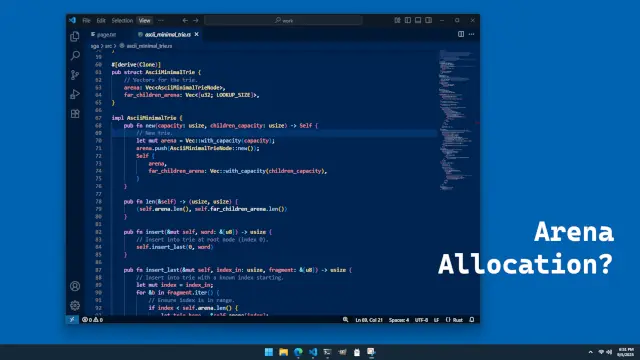Benefits of Arena Allocation
This is something that has confused me for a long time—what exactly does the term "arena allocation" refer to, and what good is it? Does a developer need to write a fancy "arena" allocator, or can a simpler approach also fill the requirement?

The term is confusing, but the concept makes perfect sense. Suppose you create a list (or array or vector) of objects in a single allocation. Each object can be referenced by an index. This list can serve as the arena allocator's backing store—we can keep track of what objects are used and referenced based on their indexes.
For example, in a trie data structure:
The "arena" for this design eliminates a lot of overhead, and reduces the number of allocations down to a minimum. One allocation can handle thousands of objects (depending on the language you are using). And pointers to these objects can be compressed down to 4 or even 2 bytes. Arena allocation is just managing any number of objects within a vector or list—and it's great for performance.